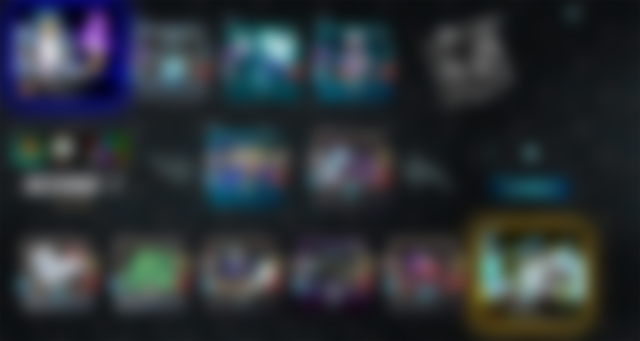If you haven't made an account yet, please use my refferal link https://splinterlands.com?ref=jelpancho. It really helps me out and encourages more content like this! Thanks!
This Guide assumes that you have already created a Splinterlands account, purchased a spellbook and are ready to battle your way through the higher levels in order to acquire tokens and valuable cards.

You may have tried a few battles, won some, lost some, and are probably overwhelmed about how everything works.
In this post, we'll go through the fundamentals of the game that any new player in Splinterlands should be familiar with.
With this guide hopefully you'll be able to quickly put together decks and start winning more consistently.
With that in mind, let's dive in!
The Cards
In Splinterlands, all cards are separated into two groups. 'Summoner Cards' and 'Monster Cards' .
Different elements (refered to as SPLINTERS) such as fire, water, earth, life, death, dragon, and neutral are represented by the Summoner Cards.

Each summoner either provides a buff to your monsters such as increased damage, magic, armor, and more, or a similar debuff to enemy monsters, such as decreased speed, armor, health, etc.
Choosing a summoner and their unique buff also limits your monster selection to neutral monsters and monsters of that splinter. Each splinter also has a preferred "playstyle" that is represented by the type of cards in that splinter. Fire is very melee focused, Water is magic focused, Holy, is all about buffs and debuffing one or two super strong monsters (usually your tank), earth is healing and regen focused, and death is all about sneak attacks. There are also dragon cards which can mix and match from other splinters.
Next, let's have a a closer look at some of the 'Monster Cards.'

'Monster Cards' come in three varieties. Ranger, Melee, and Magic
As a standard rule monsters will usually try to attack the first one in line if they are able to. In most cases these will be the tanks. However monsters can have abilities that allow them to go after other monsters in the lineup. These monsters not in the first position are referred to as the backline.
Melee cards can only attack if they are in the front row, unless they have an ability that allows them to do otherwise, such as reach, sneak and opportunity.
Magic & Ranged cards can attack from any position EXCEPT THE FIRST POSITION, and will usually target only the tank, unless they have an ability that allows them to do otherwise such as opportunity or snipe. Some ranged cards also have an ability that allows them to still attack from the front line.
Magic also ignores armor, directly attacking health, making it very powerful if your opponent uses monsters with a lot of armor. Unlike ranged cards, magic cards can still attack from the first position.
As you progress thru the ranks, the game will eventually apply rulesets that limit or change what cards can and cannot do or be used, so it's important to build a varied deck, and have a strong understanding of how different abilities work with each other.
Each monster card has different numbers on them representing different things:
Mana Cost
Damage / ATK Power
Speed
HP (Health Points)

Mana Cost - At the beggining of each match, you will be given a mana budget with which to build your team. Each card you pick, will deduct its mana cost from your budget.
Damage / ATK Power - This is straightforward - how much damage this card will do. The icon underneath this number determines whether it's magic, ranged or melee
Speed - Speed determines which cards attack first. The higher the speed, the earlier in the turn they attack. Speed can also influence dodging attacks. If there is a big difference between your card and the card attacking you, the card with the higher speed has a chance of dodging the attack. In the event of two cards having the same speed, the card with a higher rarity goes first. If both cards have the same rarity, it's random.
HP - this is straightforwards - the health of your card. When it goes to 0 it is removed from the board.
How to get more cards and build your collection
There are a few ways to build out your collection. When you purchase the spellbook you will receive some basic cards you can use for free. Once you have a good understanding of the game these cards are actually good enough to get you to silver. However it will take some trial and error to understand how to best use these cards. If you are interested in just rushing your way to silver you can take the mylor strategy which should win most of your bronze level fights. If you are interested in expanding your collection right away these are your options:
Buying packs thru the store - At the time of writing, there are currently no packs available for sale. They are all sold out. However the new expansion pack is expected to come in October, so be on standby.
Buying them off the secondary market
Completing the daily / season quests - As you play the game, you will be given a daily quest, which awards you one chest when completed. Splinterlands has a separate pool of cards only given as rewards. However the current collection has almost run out, so you are more likely to get potions or DEC rather than cards. However they have announced that a new rewards collection is dropping soon, so that should hopefully make it easier to get cards.
Rentals - This is the most common way for players to get new cards. the market place has a feature to rent cards. Card rentals are incredibly cheap, and you can easily build a strong deck for anywhere between 10-30 USD. Strong enough to get you into silver. Most card rentals you will make, will cost less than a cent per day.
Power level & Ranking up
Finally the last thing to note. If you've played a few games and reached your maximum rank level you might find that your rank is not going up. This is because to get into higher ranked tiers you need to have a certain collection power. Your collection power is the combined burn value of your playable cards. This includes rentals. More often than not you'll be spending your rental cash on accumulating rentals that will get you into the higher tiers. Gold Foils and epic cards are great for this. Once again it is possible to do this purely through the DEC you earn by playing, but you will need to play a few games without ranking up to accumulate enough DEC.
As you rank up though your DEC rewards increase substantially, and any DEC you spend to rank up can quickly be recovered. I recently worked my way into Silver on a new account with new extra cash except for teh spelbook. I was able to rank up and recover my DEC within an hour of renting the cards. But I did have to play on bronze 2-3 until I had about 300 DEC which took a few days.
Next time we'll dive into some begginer card setups (such as the Mylor Strategy)
If you haven't made your account yet, and want to help me out please use my referral link here:
https://splinterlands.com?ref=jelpancho



